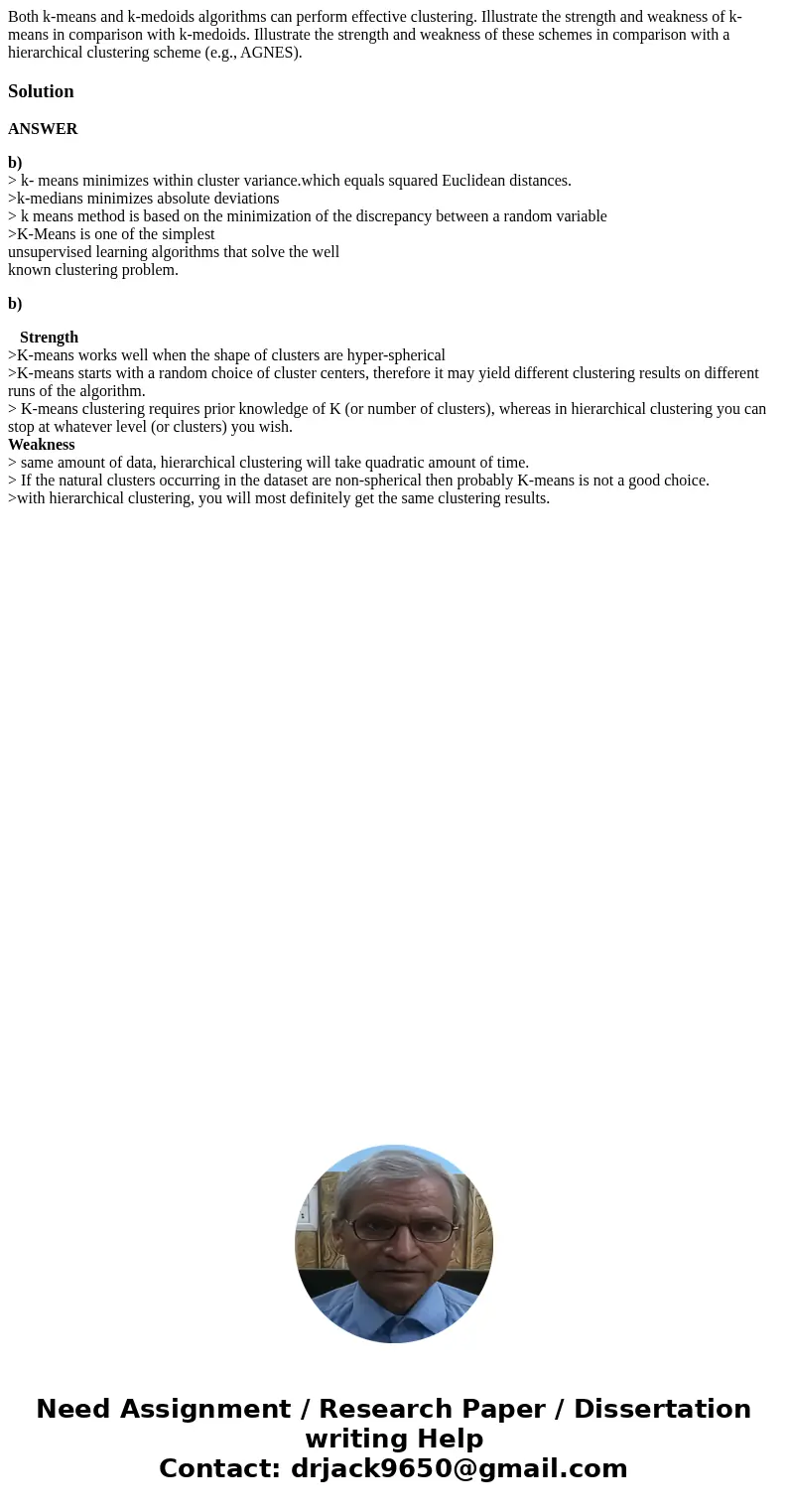Both kmeans and kmedoids algorithms can perform effective cl
Solution
ANSWER
b)
> k- means minimizes within cluster variance.which equals squared Euclidean distances.
>k-medians minimizes absolute deviations
> k means method is based on the minimization of the discrepancy between a random variable
>K-Means is one of the simplest
unsupervised learning algorithms that solve the well
known clustering problem.
b)
Strength
>K-means works well when the shape of clusters are hyper-spherical
>K-means starts with a random choice of cluster centers, therefore it may yield different clustering results on different runs of the algorithm.
> K-means clustering requires prior knowledge of K (or number of clusters), whereas in hierarchical clustering you can stop at whatever level (or clusters) you wish.
Weakness
> same amount of data, hierarchical clustering will take quadratic amount of time.
> If the natural clusters occurring in the dataset are non-spherical then probably K-means is not a good choice.
>with hierarchical clustering, you will most definitely get the same clustering results.

 Homework Sourse
Homework Sourse